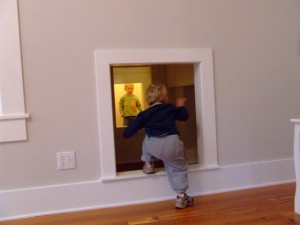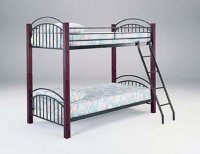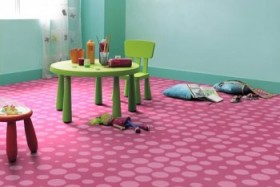Have you any children?
Saturday, January 10th, 2009 The answer to this question will influence how you distribute your space and decorate it. Sleeping space is the first consideration: do they need separate rooms or can they share? Children usually draw the short straw when it comet to handing out bedrooms, but if they are prepared to share, it could be worth giving them the biggest room and freeing up the smallest for a study.
The answer to this question will influence how you distribute your space and decorate it. Sleeping space is the first consideration: do they need separate rooms or can they share? Children usually draw the short straw when it comet to handing out bedrooms, but if they are prepared to share, it could be worth giving them the biggest room and freeing up the smallest for a study.
You should also consider their schoolwork and extra-curricular activities. These will vary according to age. but at different stages you are likely to need space for toys, homework, music practice, teenage rock groups and sleepovers. If this space Is not provided by their bedrooms, you will have to create it in other areas, and these will need furnishing in a robust style: white sofas and cream carpets may not be practical.

 Bunk beds
Bunk beds

 You will definitely need a strong, stable highchair, preferably one that can be adjusted to a convenient height for feeding the child from the table, or that can come apart to be put on a lower level. Unless you are fortunate enough to have a nursery, this will, of course, be located in the dining room or kitchen. There are low level chairs with trays as well, but a dual-purpose one will save money and space. If the chair is made of metal, there should be no sharp ends or open-ended tubes and when the feeding tray is in position there should be no possibility of the child slipping out from under it. There should also be a safety strap, a seat adjustment device that locks securely and, for maximum stability, the base should always be wider than the seat. You may have to buy the harness separately. Either way, make sure that there is firmly fixed anchorage for it. A proper foot rest adds comfort. As they get older children will need proper chairs so that they can sit at a table to eat, sturdy chairs to climb on to reach things, soft, comforting body-moulding chairs for relaxing in and chairs that give good support for working. They particularly like chairs that move (rockers, chairs on wheels or castors) or chairs that they can sink into, like bean bags or sag-bags. These should have fireretardant stuffing. Toddlers prefer low seats so that their legs rest on the floor, otherwise they get very tired. Stackable plastic chairs in bright colours are ideal for mealtimes and for working. So are sturdy wooden chairs, especially those with arms which feel safe and are more restful. Stools, too, are quite good for painting, model-building, drawing; there is an adjustable variety which will grow with the child. If you can get a step-stool you will find it invaluable in the bathroom (for reaching the basin or sink) as well as in their playrooms and/or bedrooms. Look for the kind with suction devices that keep them steady and firm.
You will definitely need a strong, stable highchair, preferably one that can be adjusted to a convenient height for feeding the child from the table, or that can come apart to be put on a lower level. Unless you are fortunate enough to have a nursery, this will, of course, be located in the dining room or kitchen. There are low level chairs with trays as well, but a dual-purpose one will save money and space. If the chair is made of metal, there should be no sharp ends or open-ended tubes and when the feeding tray is in position there should be no possibility of the child slipping out from under it. There should also be a safety strap, a seat adjustment device that locks securely and, for maximum stability, the base should always be wider than the seat. You may have to buy the harness separately. Either way, make sure that there is firmly fixed anchorage for it. A proper foot rest adds comfort. As they get older children will need proper chairs so that they can sit at a table to eat, sturdy chairs to climb on to reach things, soft, comforting body-moulding chairs for relaxing in and chairs that give good support for working. They particularly like chairs that move (rockers, chairs on wheels or castors) or chairs that they can sink into, like bean bags or sag-bags. These should have fireretardant stuffing. Toddlers prefer low seats so that their legs rest on the floor, otherwise they get very tired. Stackable plastic chairs in bright colours are ideal for mealtimes and for working. So are sturdy wooden chairs, especially those with arms which feel safe and are more restful. Stools, too, are quite good for painting, model-building, drawing; there is an adjustable variety which will grow with the child. If you can get a step-stool you will find it invaluable in the bathroom (for reaching the basin or sink) as well as in their playrooms and/or bedrooms. Look for the kind with suction devices that keep them steady and firm.